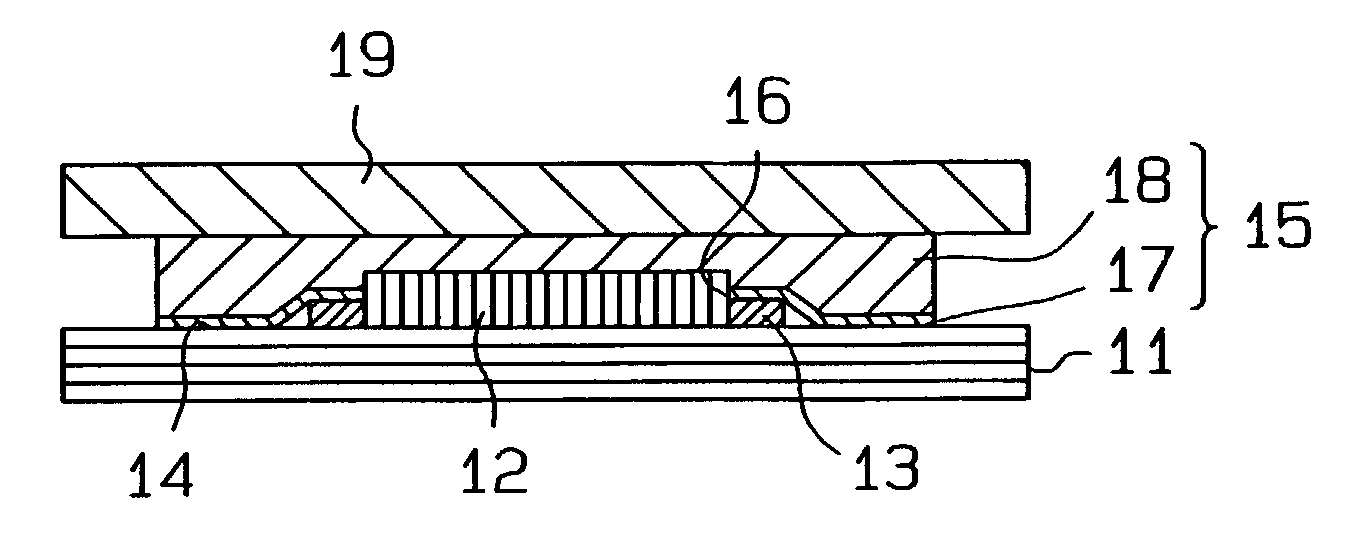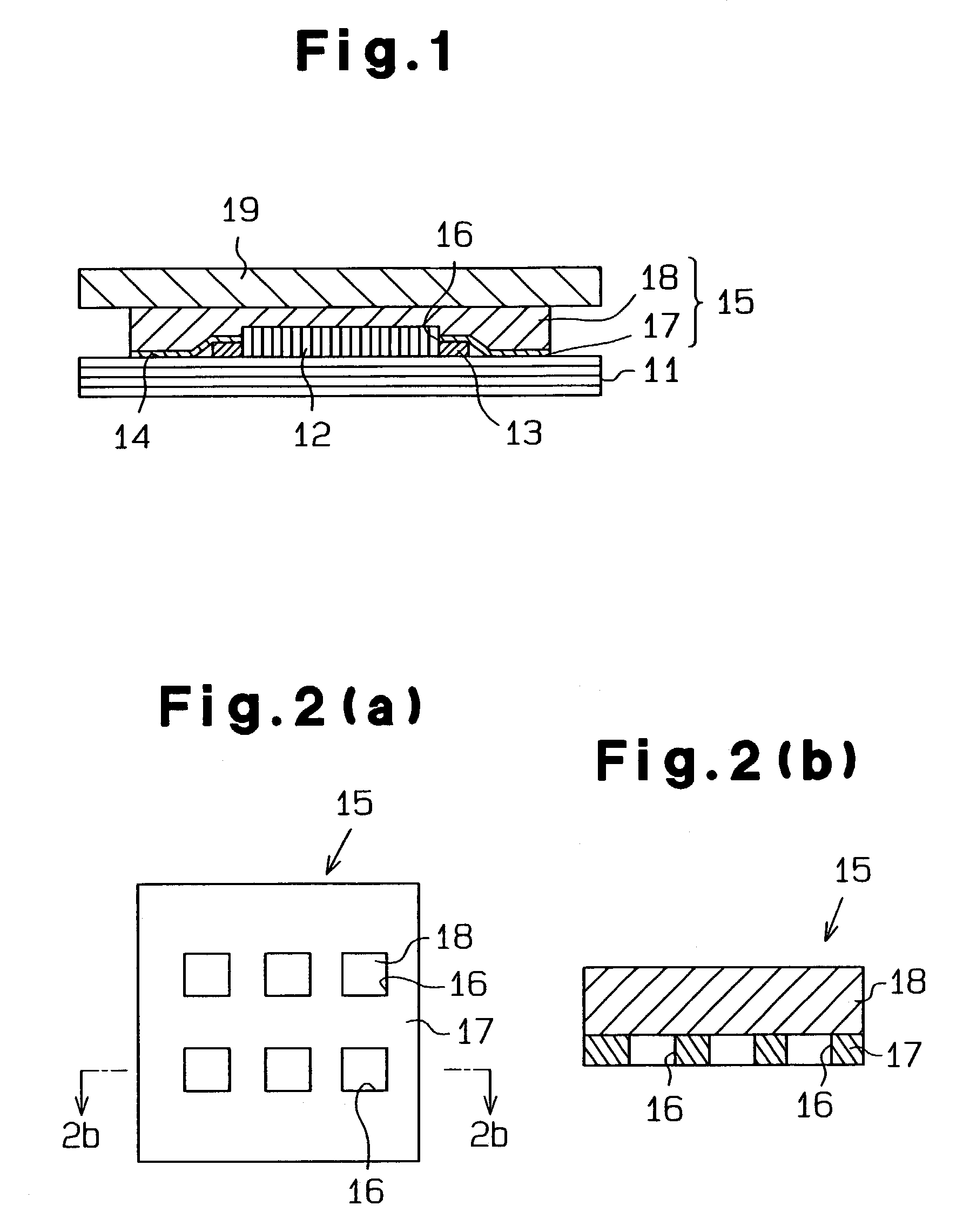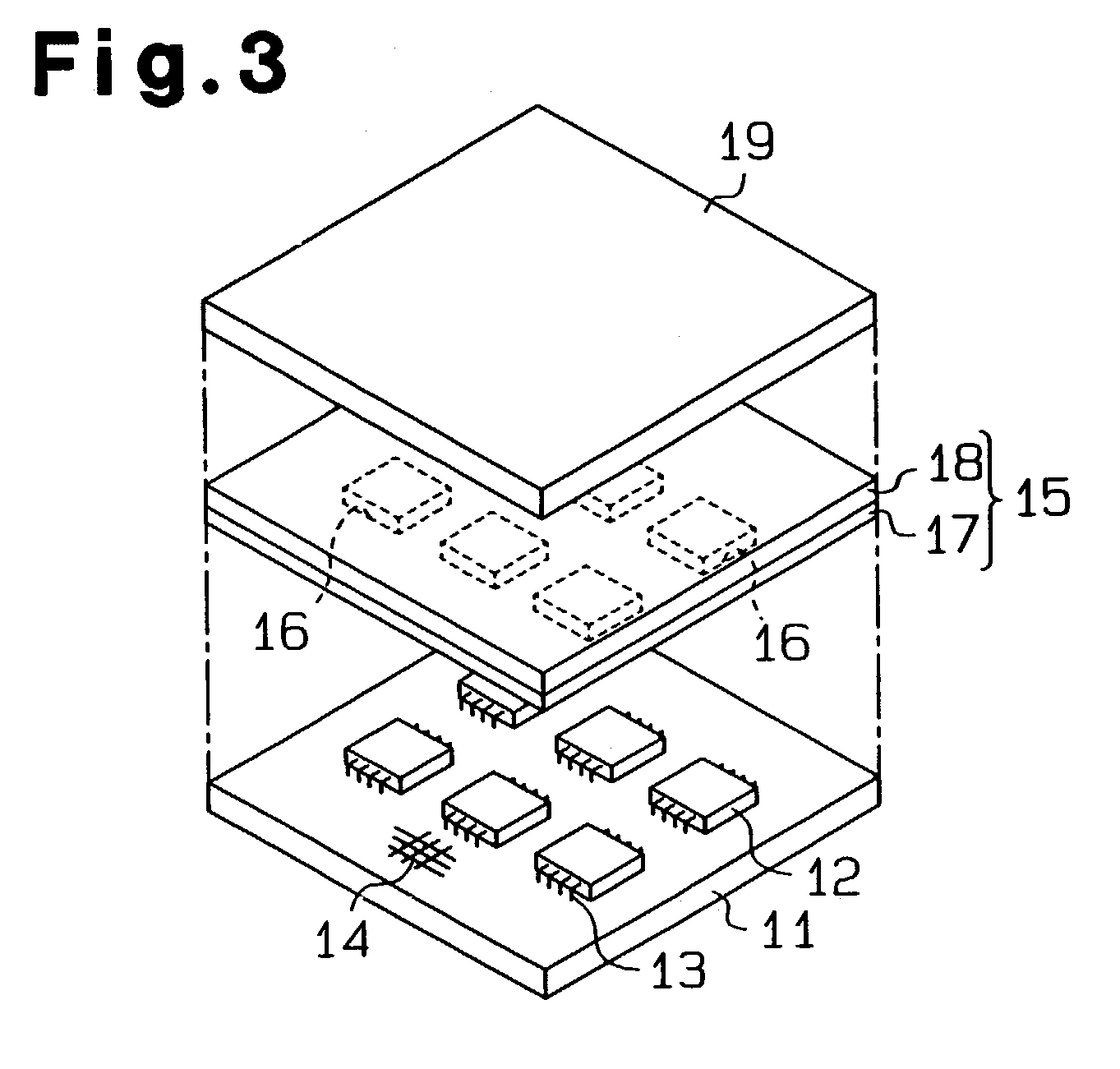Method for cooling electronic components and thermally conductive sheet for use therewith
a technology of electronic components and thermally conductive sheets, which is applied in the direction of cooling/ventilation/heating modifications, thin material processing, semiconductor devices, etc., can solve the problems of increasing electric power consumption and heat generation, generating significant amounts of heat for high-performance electronic components, and urgent cooling of electronic components. achieve the effect of efficient operation
- Summary
- Abstract
- Description
- Claims
- Application Information
AI Technical Summary
Benefits of technology
Problems solved by technology
Method used
Image
Examples
example 1
[0048]60% by volume of an addition reaction type liquid silicone gel (WACKER ASAHI KASEI SILICONE Co., Ltd.) having a specific gravity of 1.0 as the matrix was mixed with 20% by volume of graphitized carbon fiber having an average fiber length of 15 μm and 20% by volume of an alumina powder having an average particle size of 2 μm, each serving as the thermally conductive filler. The mixture was mixed in a mixer until the mixture was uniform and the uniform mixture was deaerated in vacuum. The mixture was then filled into a hollow aluminum die having a sheet-shaped cavity with 0.5 mm clearance and coated with a fluorine resin (polytetrafluoroethylene), and the mixture in the die was heat-cured in a magnetic field directed across the clearance of the cavity (i.e. along the thickness of a layer to be formed) to obtain a thermally conductive layer 18. The graphitized carbon contained in the resultant thermally conductive layer 18 was oriented along the thickness of the thermally conduct...
example 2
[0050]A 0.5 mm thick thermally conductive layer 18 was formed in the same manner as in Example 1. As shown in FIG. 2(b), the parts of the thermally conductive layer 18 corresponding to the electronic components 12 were masked in conventional manner. Using the screen printing technique, a silicone ink having an electrical resistance of 1.0×1012 Ω·cm or higher was applied over the masked layer to a thickness of 0.01 mm and was completely dried to form an insulation layer 17. This completed a thermally conductive sheet 15.
example 3
[0051]A 0.5 mm thick thermally conductive layer 18 was formed in the same manner as in Example 1.
[0052]Then, a polyester film to which a silicone adhesive with an electrical resistance of 1.0×1012 Ω·cm had been applied to a thickness of 0.2 mm was prepared, and as shown in FIG. 2(a), the areas of the sheet corresponding to the electronic components 12 were cut out from the film to form a plurality of windows 16. The silicone adhesive-coated polyester film was then laminated onto the thermally conductive layer 18 to form an insulation layer 17. This completed a thermally conductive sheet 15.
PUM
| Property | Measurement | Unit |
|---|---|---|
| thickness | aaaaa | aaaaa |
| thermal conductivity | aaaaa | aaaaa |
| thickness | aaaaa | aaaaa |
Abstract
Description
Claims
Application Information
 Login to View More
Login to View More - R&D
- Intellectual Property
- Life Sciences
- Materials
- Tech Scout
- Unparalleled Data Quality
- Higher Quality Content
- 60% Fewer Hallucinations
Browse by: Latest US Patents, China's latest patents, Technical Efficacy Thesaurus, Application Domain, Technology Topic, Popular Technical Reports.
© 2025 PatSnap. All rights reserved.Legal|Privacy policy|Modern Slavery Act Transparency Statement|Sitemap|About US| Contact US: help@patsnap.com



